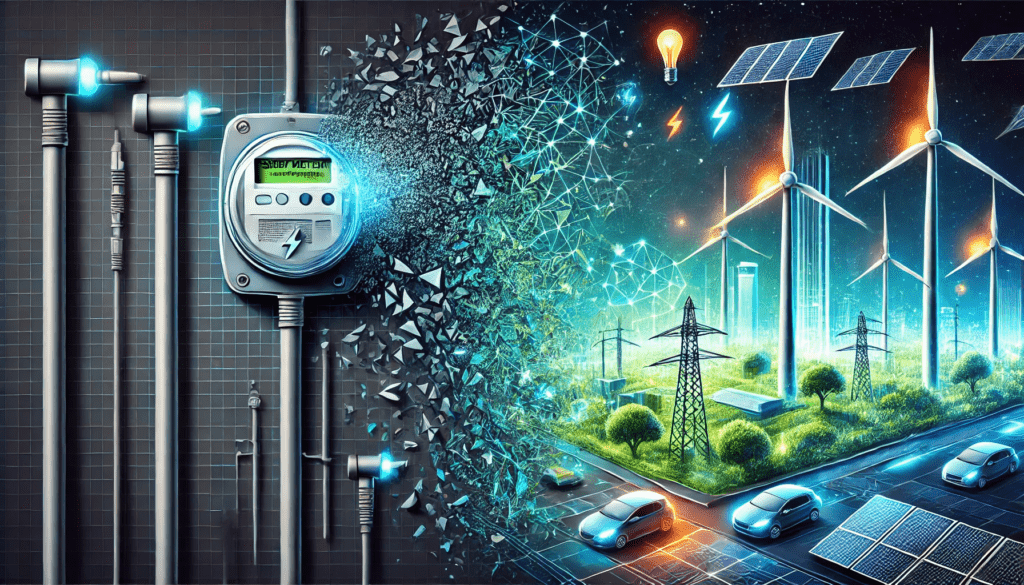Smart Metering Is Dead, Long Live Smart Grids
Does it make sense to talk about the darkness of Smart Metering, while there is a plenty of roll-outs within the Europe and world realized nowadays? With deployment of large projects at Spain, France, or Great Britain, where is the retreat from the stage?
What are the changes in power industry?
Many could be surprised but there are some that already know it is a natural evolution. Smart metering (in today’s form) with its limits makes place to smart grid that can use available technologies in more complex way.
Due to many circumstances, power industry faces crucial irreversible changes. Classic schematics, i.e. tariffs, begins to meet its limits, modern ecological power supplies have high rate of unpredictable supply with changes in almost second’s intervals. Defined energy flow from large producer towards consumer is significantly changed as distributed power supplies play more important role and production is moved on the both, low and high voltage levels.
Last, but not least, the idea of load characteristics, where basic harmonics belong to small consumers and higher harmonics are related to high load is also obsolete. Currently, the modern households use low input appliances, and we can rarely find appliance that wouldn’t distort the energy network. At this place, it is necessary to mention this situation could remain (in the best case) the same, but this is very optimistic view.
The drawbacks of Smart Metering
All these effects (the list is not final) have negative impact on network stability from both, energy balance, and electromagnetic compatibility point of view. Subsequently, they significantly increase production costs and have negative influence on distribution through the losses increase. With converter usage at appliances, and at modern local power supplies, they miss regular reviews and often do not fulfill their purpose. There are only two tools, how to solve this situation.
The first possibility is the accurate measuring in the band up to ca. 10 kHz, which means at all quadrants and up to 200 harmonics. The second one is the postponed consumption. In other words, we have to significantly draw consumer in game. Moreover, we have to convince the consumer about advantage of this tool even at very small rate of regulated output. Obviously, that requires using synergy effect of measuring and energy power controlling. The same communication channel and the same device will thus serve for other consumed energies (water, heat…) at customer.
The abovementioned facts contribute to forming requests for modern electronic device that is (by tradition and old habits) still called e-meter.
New requirements for Smart Grid Technologies
We have already mentioned the basic request for measuring. Relatively quick communication with control system belongs among other requests. It is necessary to distinguish the weight of single messages, output reaction time of single activities, respectively. Execution of regulation orders must take less than one minute, whilst transfer of large volume messages happens at the moments with reduced load (or when another transfer channel is not busy).
One of the most important requests is the distribution of decision making. It is a real wasting to transfer all data to central system that will, subsequently, decide how to manage them. If energy system has a normal behavior, the transferred data are, in most cases, thrown away. It means it is necessary to decide on the lowest possible level and transfer only reports and deviations.

There is a very important request – to control customer’s deferred consumption. E-meter has to be equipped with further communication channels for managing consumer appliances, controlling local power production (i.e. energy flow transfer into the customer’s accumulation element – water heating, etc.).
We cannot also forget the aspect of system security. The communication channels are freely opened and this critical infrastructure ensures normal life and operation of the whole country. Requests on system characteristics, ways of security, encryption level, key management, etc. are already defined. Credible data transfer from meter to billing is crucial from the legal point of view. The implementation of electronic signature is the only relevant tool how to solve this request.
Conclusion: Are Smart Meters good enough?
There is a promise to the future. Even such a conservative group as energy branch (if it is not under the dictate of political decision) evaluated on its large pilot projects that AMM, or smart metering tools are not sufficient from the future point of view. Basically, there are two main characteristics of AMM – remote reading of active energy in narrow frequency band, and tariffs switching. It is not possible to face the requests rolling on power industry with these tools only. Therefore smart metering is dead, long live smart grids.
| Requests for residential meters | Old requests (AMM, smart metering) | Actual requests (smart grid) |
| Measured Energy | Active | Reactive, Apparent , Deformation |
| Measured Power | Phase, Total | By Harmonics |
| Neutral Current Measuring | Yes | With analysis |
| Harmonics | Up to 10th | Up to 200th |
| Encryption | AES 128 | AES 256 |
| Readout, Commands | Check Sum | Digital Signature |
| Key Management | None | Remotely Replaced Keys |
| Computing Performance | Poor (Up to 20 MIPS) | Excellent (more than 250 MIPS) |
| Data | Limited processing | With Analysis, Histogram, Statistics |
